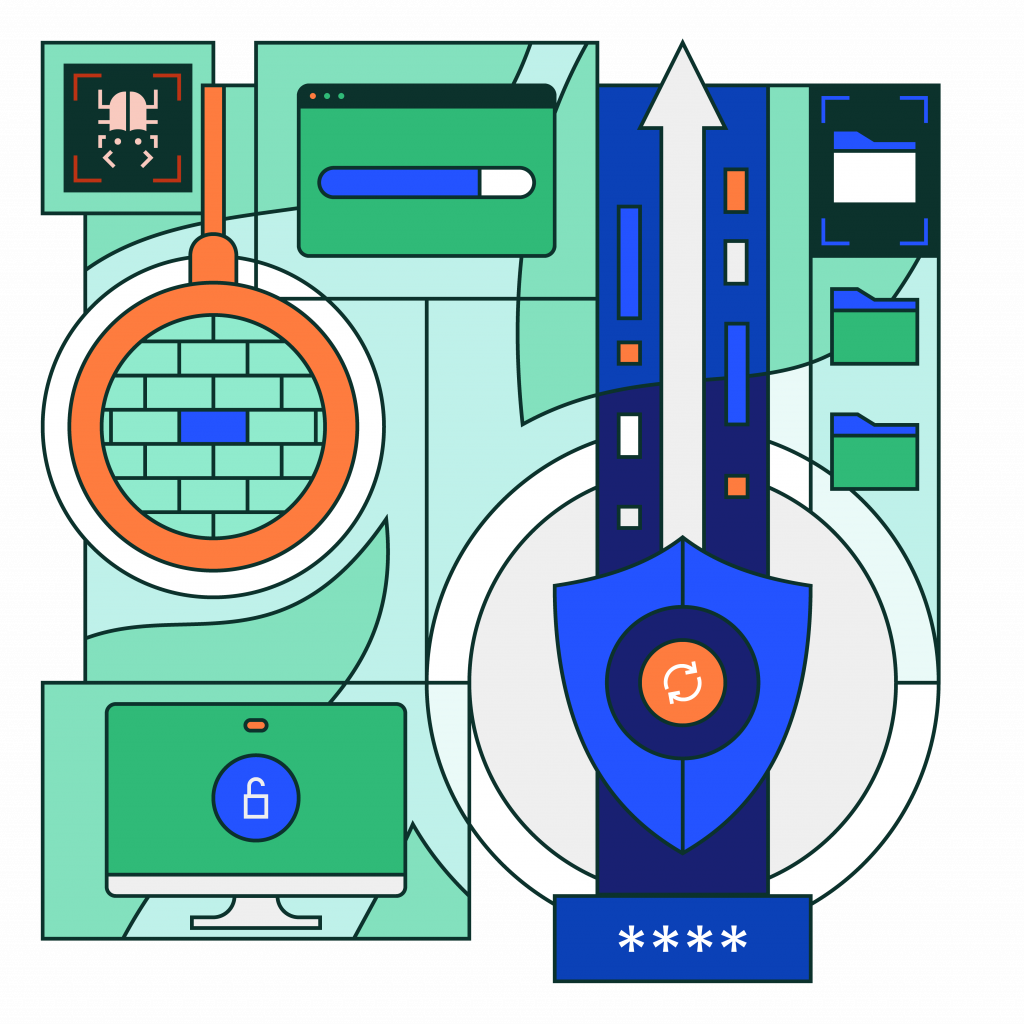Top Strategies for Enhancing Linux Server Security
In early 2024, Linux hit above 4% of the global desktop operating system market share. Its popularity is increasing rapidly — and so is the rate of cyberattacks and data breaches in Linux systems.
To protect against cyber threats to your enterprise, it’s vital to secure your Linux servers. Implementing basic security measures is just the starting point. To protect your data against increasingly sophisticated cyberattacks, here are some of the advanced security strategies we recommend to keep your company safe and compliant.
Implementing (And Maintaining) Firewalls
Firewalls are the first major line of defense for secure Linux distros. Firewalls monitor traffic that comes in and out of a network. If incoming traffic doesn’t fit certain criteria, the firewall can quickly block it and protect against viruses, denial-of-service (DoS) attacks and other malware before it causes damage.
To keep your company safe, you can choose hardware firewalls or software firewalls (or both) for your Linux server security. Hardware firewalls are their own physical devices. They protect entire enterprise networks. While they are certainly an investment, both in terms of money and in setup time, they have distinct advantages. Because they’re separate devices, they don’t take up CPU or memory capacity and can be managed externally. On the other hand, firewall security for Linux environments are typically installed on individual machines. Software firewalls are better suited for workstations and individual servers because they have more configurability.
Firewalls are important, but you can’t just turn them on and forget them; they must be maintained. You need to follow best practices for managing firewall rules for your firewall to be effective. Protect your Linux servers by regularly updating and auditing firewall rules. Be sure to establish audit trails, test firewall rules thoroughly before you apply them, and frequently back up your firewall configuration.
Firewall maintenance and best practices involve a lot of work. The good news, though, is that a lot of that work can be automated. You can use automated tools to scan for vulnerabilities and automatically backup configurations. Automating rule analysis is also helpful. You can also set your stateful firewalls to automatically manage connection states, reducing the need to open unnecessary ports. Some helpful tools for automating tasks are iptables, nftables, ufw and firewalld.
Use IDS for Protection From Internal Threats
Firewalls are great at detecting and defending against external threats. However, your Linux servers could be vulnerable to internal threats as well. That’s where Intrusion Detection Systems (IDS) come in. IDSs can detect suspicious activity from internal users and alert network administrators in real time. IDSs can also log the event so admins can understand better where the attack came from, how it affected the network and how to prevent it from happening again.
Network-based IDSs typically analyze network packets and provide a broader view of an entire network. If suspicious activity occurs, network-based IDSs (or NIDS) can alert admins and block the threat in real time. Companies may also benefit from host-based IDSs (or HIDS). These systems typically have deeper details into threats, but they only provide post-event analysis, so you don’t get real-time information. Combining IDSs of either type with other security measures create a layered defense for a secure Linux server.
Leverage SUSE Linux for Enhanced Security
Selecting the right operating system for your Linux workloads has a major impact on the security of your environment. SUSE Linux is a highly reliable, scalable and secure server operating systems family. SUSE Linux provides a secure foundation for your Linux infrastructure. SUSE Linux Enterprise Server comes with advanced security features like AppArmor for application-level security and comprehensive patch management to make sure your workloads are secure and compliant. Even better, SUSE offers long-term support to make sure you maintain security and compliance long after your purchase has been made.
You can configure your SUSE Linux in enforcing mode for maximum security. Since SUSE Linux Enterprise Server is highly customizable, you can also tailor it for your specific use cases to ensure your security is as unique as your data.
Advanced Strategies for Enhancing Linux Server Security
Aside from the beginner-level security tasks, here are some of the more advanced best practices you should be proactively implementing to keep your secure Linux distro healthy:
- Always keep your server software up to date
- Automate updates and manage patches effectively
- Implement strong authentication mechanisms, such as SSH keys, multi-factor authentication and other secure login methods
- Disable root access
- Enforce password policies
- Set up automated alerts for unusual network behavior
- Continuously monitor server logs and activities and have a real-time update system
Implementing those security measures to obtain a hardened Linux can be complex and error-prone, and a misconfiguration can interfere with your applications. For this reason enterprise Linux providers like SUSE release guides and best practices on how to do it. For more information about how to harden your Linux, you can refer to our guide.
Ready To Take Your Linux Server Security Seriously?
Keeping your Linux enterprise server secure requires constant work and vigilance. Fortunately, by following the best practices discussed in this article, you can stay ahead of cyber threats. The more proactive you are about server security, the safer your company will be. These tips for advanced Linux security will help keep your firewall security robust and your data safe.
To learn more about a Linux enterprise server with a robust security posture, check out SUSE Linux Enterprise Server.
(Visited 1 times, 1 visits today)
